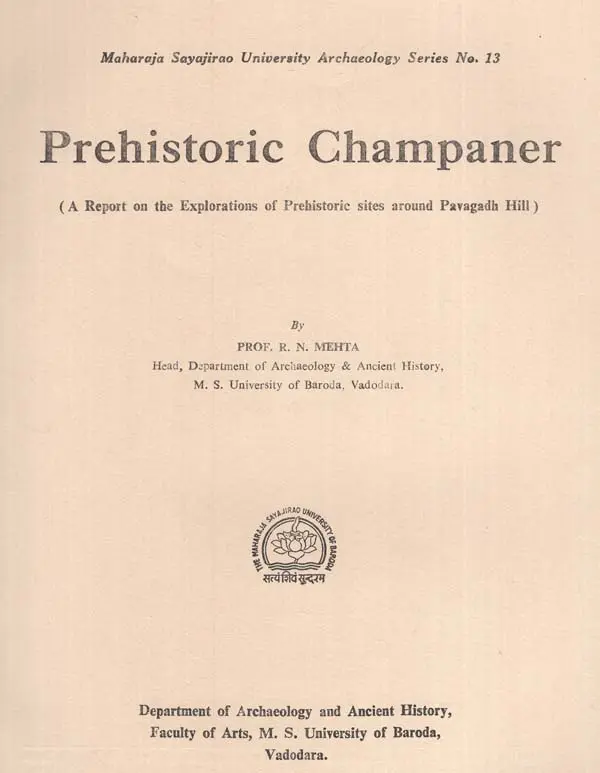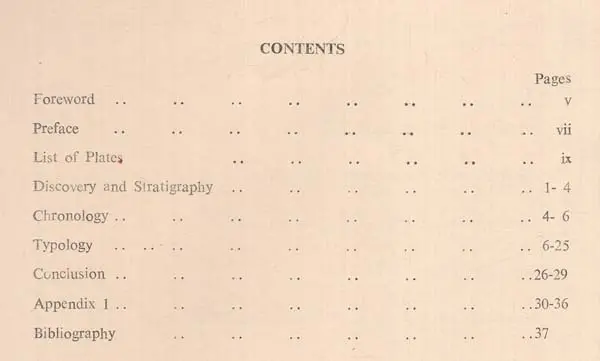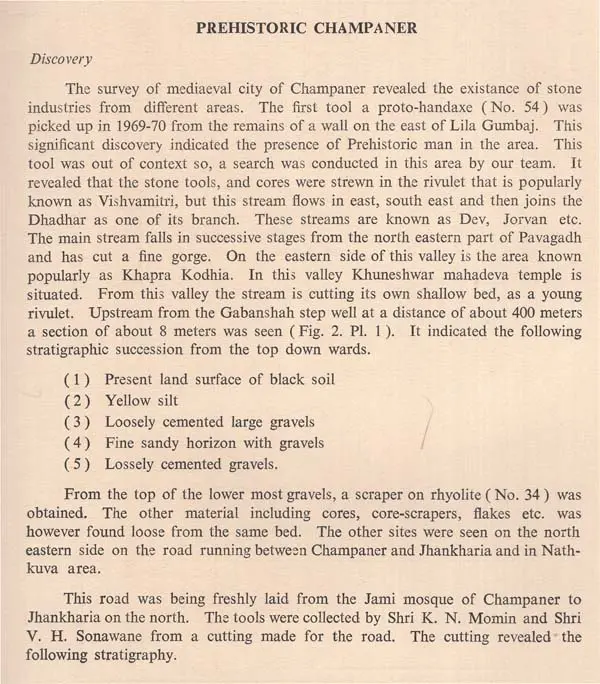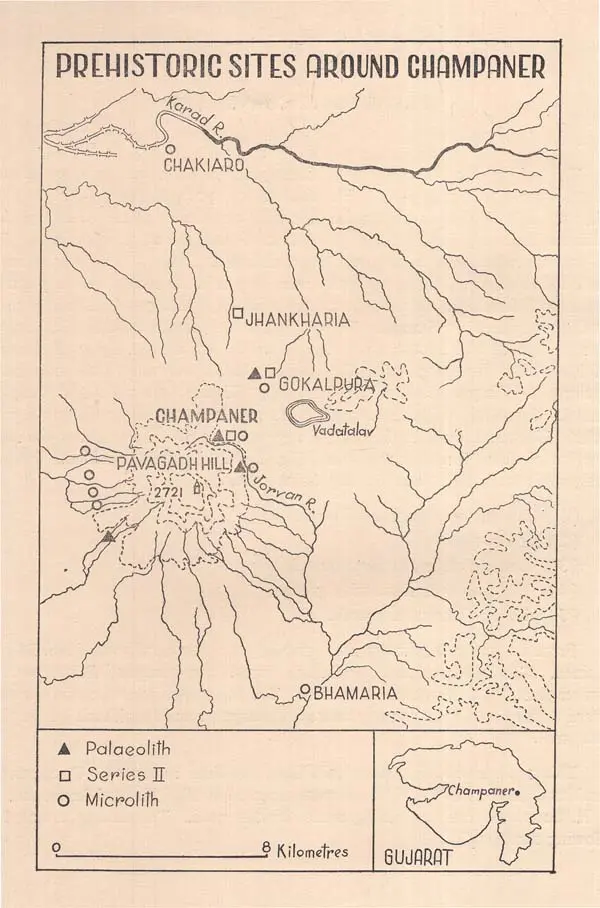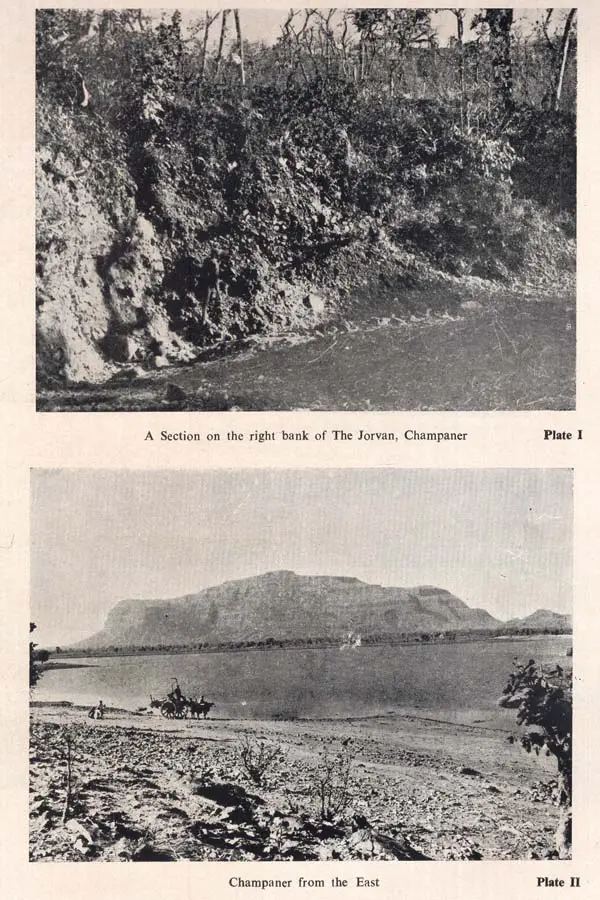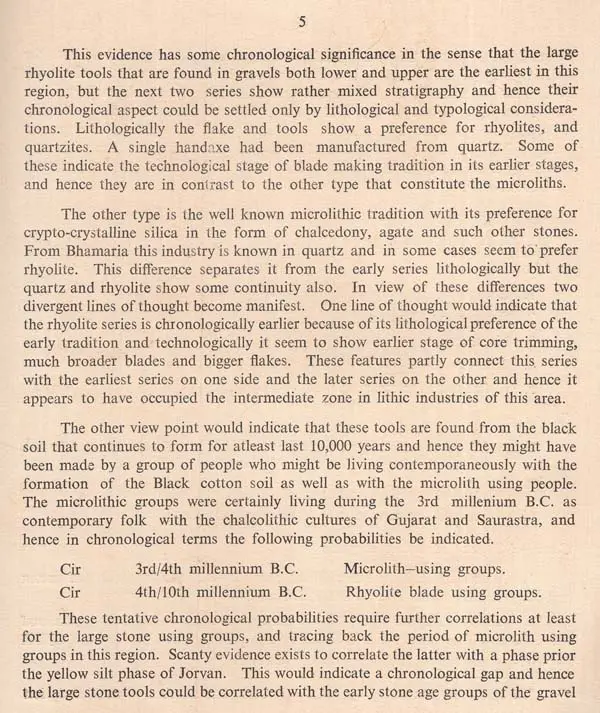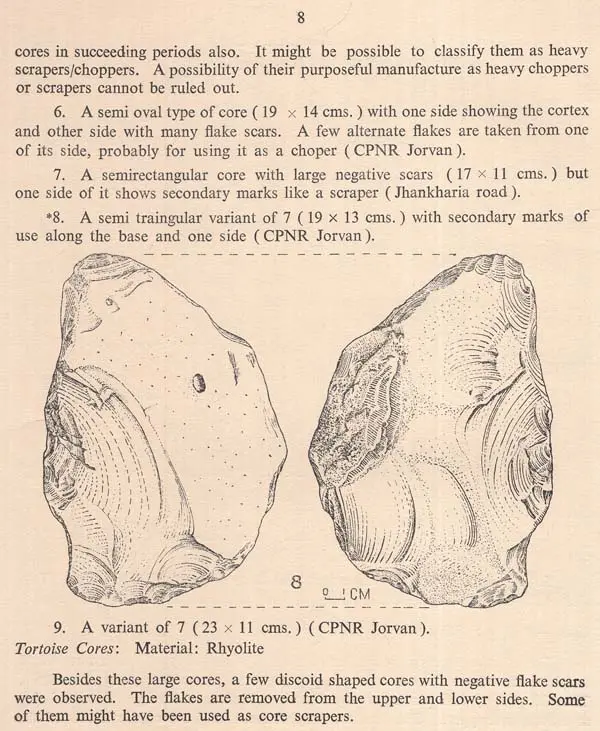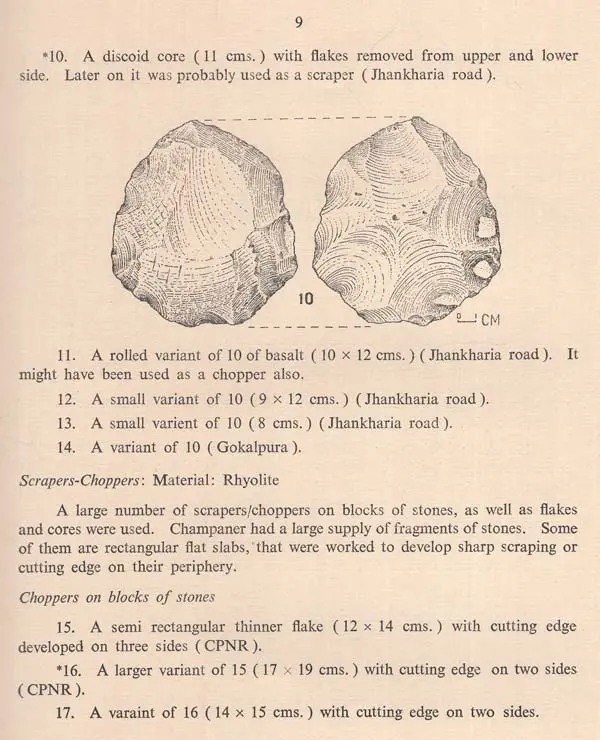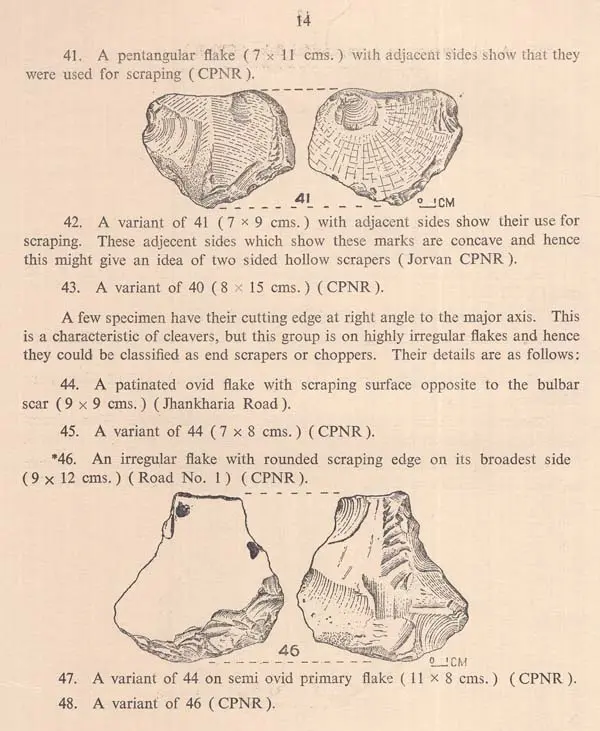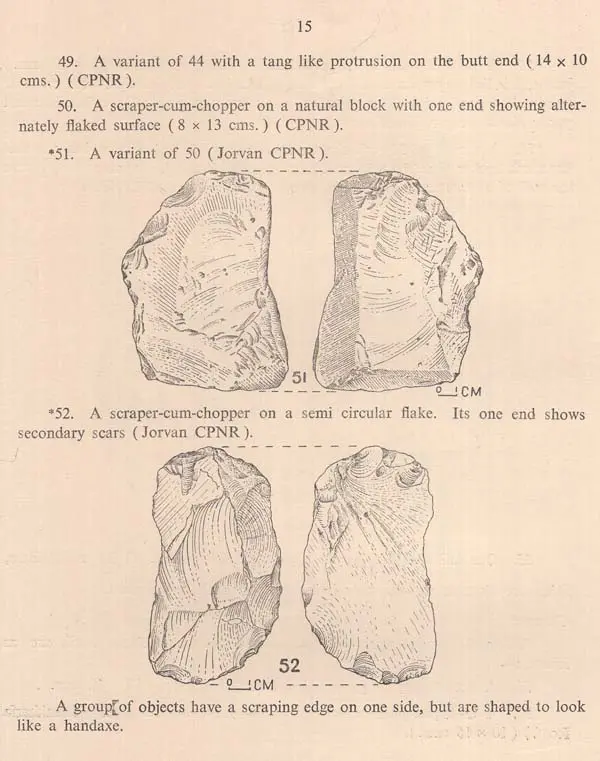
Prehistoric Champaner - A Report On The Explorations Of Prehistoric Sites Around Pavagadh Hill (An Old And Rare Book)
Book Specification
| Item Code: | UAQ717 |
| Author: | R.N. Mehta |
| Publisher: | The Mahraja Sayajirao University of Barodra |
| Language: | English |
| Pages: | 37 (Throughout B/W Illustration) |
| Cover: | PAPERBACK |
| Other Details | 11.50 X 9.00 inch |
| Weight | 180 gm |
Book Description
The Department of Archaeology and Ancient History of the M. S. University of Baroda carries on a systematic study of the material culture of India by exploring and excavating archaeological sites. It publishes its findings in the M. S. University Archaeology series.
In this tradition, this is the 13th Monograph. It is the first report on extensive explorations conducted at Champaner by the Department. While exploring the mediaeval capital of Gujarat, accidentally rich prehistoric materials were discovered. These earliest antiquities of Champaner are presented in this Monograph.
I am sure that the scholars in the field will find this publication a useful one providing new data for the Panchamahals. The other reports on explorations and excavations at Champaner will be shortly published by the Department.
P. J. MADAN
Vice-Chancellor
M. S. University of Baroda
Our main project of the work at Champaner concentrates on the study of Mediaeval monuments, town and its archaeological potential to develop the methodological and theoretical tools for Mediaeval as well as Urban Archaeology. While doing this work, field archaeology has to pay attention to the phenomenon observed in the field work and it led to significant and startling results. While the town-scape of Champaner, a mediaeval capital of Gujarat was being studied, from the wall of a mediaeval house, one of our students Pandey S. N. collected a proto-handaxe, This tool (No. 54 in the text) from a mediaeval wall recalled the experience of the author at Tripuri, Navada toli and other places, and hence it was decided to follow the clue, to unravel the remnants of Prehistoric Champaner.
Initially the result was the collection of a few flakes of rhyolites and cores of microlithic nature. But pursuit in the nalas of Jorvan by C. U. Bhagat brought the evidence of larger cores and flakes. A systematic search of the river indicated the sections and many tools were collected.
Shri K. N. Momin and Shri V. H. Sonawane of the Department went on searching road cuttings, nalas and field in this area. This search built up the collection which is studied here.
Dr. H. D. Sankalia visited the site and confirmed our observations. This gave us an added impetus to study and collect the materials from the region, while we were engaged in studying urban archaeology of Champaner for understanding the archaeological potential of the Mediaeval Period. Field operations, therefore, are similar whether one conducts his activity in Mediaeval Archaeology or Pre historic Archaeology and hence the field workers should be on alert to pursue the clues offered in a given region.
The preliminary observations of our staff were further strengthened by furtherfield-work during the spare time. The illustrations for this report is the work of R. J. Khatri, N. M. Khatri and R. C. Sutaria to whom the author is obliged. The MSS was typed by Shri B. A. Shah and the proofs were read by Mrs. D. R. Shab In the botanical observations on the field the author received much help from Dr. G. M. Oza. He also gave the Indian names of the Vegetation for Appendix 1.
One of the son of the Department Kum. Darly worked out the food-potential of this region as a dissertation. Results of her work are given in the Appendix 1. that is prepared from her work by Dr. K. T. M. Hegde.
As already noted above our main work centres round Mediaeval and Urban Archaeology at Champaner. This important Prehistoric material is published as the first volume in the series of Publications on Champaner, for cultural and chronogical consideration.
The author is obliged to Professor P. J. Mudan, the Vice-Chancellor of the M. S. University of Baroda and Professor S. M. Sethna the Pro-Vice-Chancellor ed the University for their keen interest in the work. My gratitude is also due to Prol. Nurul Hasan, the Ex-Minister of Education, Government of India for his keen interest in the work. He is grateful to Shri M. N. Deshpande, The Director General of Archacology and Shri B. K. Thapar, The Additional Director General, Archaeological Survey of India for their help. The help given by W. Siddiqi and D. Margabandhu, the Superintending Archaeologists-Western Circle was praise worthy, Prof. Satishchandra, Chairman, U.G.C. encouraged us by his visit to the site and Prof. S. C. Misra by his enthusiasm.
R. N. MEHTA
Vijaya Dashmi,
V.S. 2033,
Vadodara.
